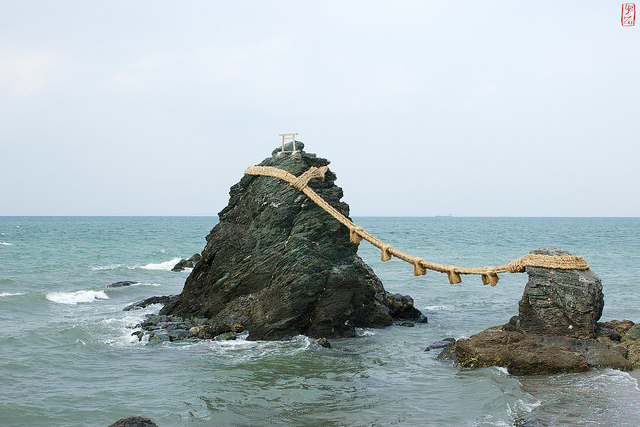Jun 20, 2016
Day Trips From Nagoya – Ise Shima
Following the visiting of the G7 national heads of states, Ise Shima has been in the news frequently as of late. But there is so much more to the beautiful Mie Prefecture spot than politics.
About Ise Shima
The Ise-Shima region refers to the areas of eastern Mie Prefecture in or around Ise-Shima National Park, including the cities of Ise, Toba, Shima. The area is an extremely popular tourist destination for both foreigners and Japanese, with many resort hotels and beaches in the area. It is also famed for fresh seafood, particular oysters and lobsters, or as they are called in Japan ‘Ise Ebi’ (Ise prawns).
Ise
 Without doubt the most popular place to visit in the area is Ise-shi (Ise City), being as it is the home to one of the most sacred spots in Japan, the Ise Grand Shrine. With in excess of 7.5 million people from Japan and around the world making the pilgrimage to the holy spot each year (including the visiting dignitaries of the G7 Summit), it sprawls across the city and is a must see destination for anyone visiting the area.
Without doubt the most popular place to visit in the area is Ise-shi (Ise City), being as it is the home to one of the most sacred spots in Japan, the Ise Grand Shrine. With in excess of 7.5 million people from Japan and around the world making the pilgrimage to the holy spot each year (including the visiting dignitaries of the G7 Summit), it sprawls across the city and is a must see destination for anyone visiting the area.
The Grand Shrine (more about which you can read here) is not the only sacred spot in the area. Nearby, as part of a rocky outcrop into the sea, is Meoto Iwa, the wedded rocks (pictured). The two great stones, tied together by a ‘shimenawa’ straw rope weighing over a ton, represent the Shinto deities Izanami-no-Mikoto and Izanagi, and are perhaps the visual representation of the area.
But Ise isn’t just about religious pilgrimage. Ise Azuchi Momoyama Bunkamura is a pre-Edo period theme park, modeled on a full size representation of Odo Nobunaga’s Azuchi Castle. It’s great for history buffs, and kids can enjoy the samurai displays and acting like ninjas, including dressing up and (if old enough) trying out shiruken ninja throwing stars.
For another hands on, child friendly experience you can go to the small but intimate Ise Sea Paradise aquarium. Though not the biggest of its kind, it is quite interactive with dolphin shows and meeting kiss-blowing walruses.
Toba
 The city of Toba is famed primarily for three things: the semi naked female divers called Ama-san, the pearls for which they dived, and the fabulous food.
The city of Toba is famed primarily for three things: the semi naked female divers called Ama-san, the pearls for which they dived, and the fabulous food.
Thanks to changes in technology and culture the 2,000 year old Japanese traditional ‘ama’ divers are a dying breed, however while they are mostly in their later years they still exist. These women, now fully clothed (historically, and as recently as the 1960s, ama dived wearing only a loincloth) free-dive for pearls without scuba gear or air tanks. Should you wish you can meet and dine with them on the freshest sea food, including lobster sashimi (pictured), as they regale you with their tales of the sea. Check the link here or details. (Bringing a translator is probably necessary.)
If jewelry is your thing, well it is advisable to check our one of the many pearl based jewelry stores. Toba is the location of the world’s first purpose built pearl culturing farms. To learn about the history of the industry in the area then Mikimoto Pearl Island is a nice museum dedicated to the precious jewel.
Being a coastal area, like Ise-shi, Toba-shi also has an aquarium, but at 1.5km, housing 25,000 specimens of some 1,000 species the Toba Aquarium is much larger. The area is separated into 12 zones including one displaying the sea life of the Ise Shima region.
Shima
 Shima-shi is the least visited of the three, but it is no less worthy of your time. Perhaps its greatest attraction is its great natural beauty, which is best seen from the Binadama road. Taking a stroll along this scenic coastal path is beautiful by day but particularly romantic by night as rows of ‘binadama’, spherical glass fishing buoys, are lit along the pathway (pictured).
Shima-shi is the least visited of the three, but it is no less worthy of your time. Perhaps its greatest attraction is its great natural beauty, which is best seen from the Binadama road. Taking a stroll along this scenic coastal path is beautiful by day but particularly romantic by night as rows of ‘binadama’, spherical glass fishing buoys, are lit along the pathway (pictured).
For a great view of the region’s staggering scenery, head out to the Anorisaki Lighthouse. First lit in 1873, the lighthouse is a staple of the area’s landscape. Though modernized in 1948, it is open to tours, and is a great location from which to gaze out across the sea.
The Shima Spainland is something more for the kids. A theme park dedicated to the Iberian nation, there are rides and food to enjoy amongst the Spanish ambiance, though quite what it has to do with the local area is beyond me.
By Mark Guthrie
Photo: Flickr.com Les rochers mariés by Vincent Briccoli (CC BY-SA 2.0) -Modified
Photo: Flickr.com DSC06757.JPG by takaokun (CC BY-SA 2.0) -Modified
Photo: www.iseshima-kanko.jp/en/see-and-do/1258 -Modified


About the author